It’s been a wild ride for the Australian dollar ever since it peaked in late October at the 75 cent level against USD, falling over 500 pips to a yearly low below the 70 cent level as traders anticipated the Fed’s fight against inflation before zooming higher last week:
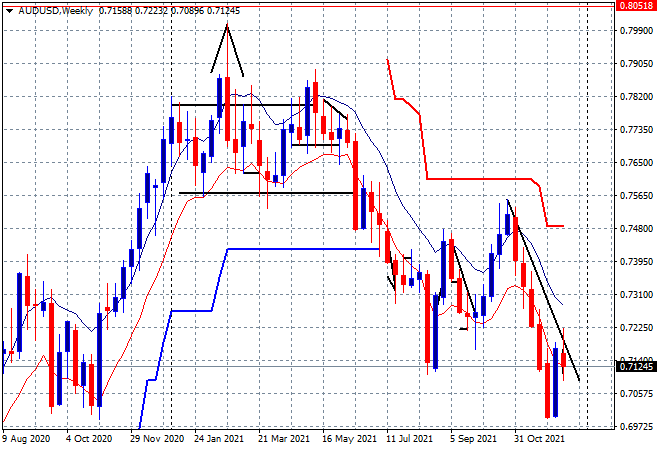
The weekly chart above clearly shows this downtrend is nowhere near breached, despite the upside moves with the daily chart that has a few non-trading economists ready to call a new rally in the Pacific Peso. Momentum remains flat following the FOMC meeting spike higher, with price action unable to breach overhead resistance at the 72 handle:
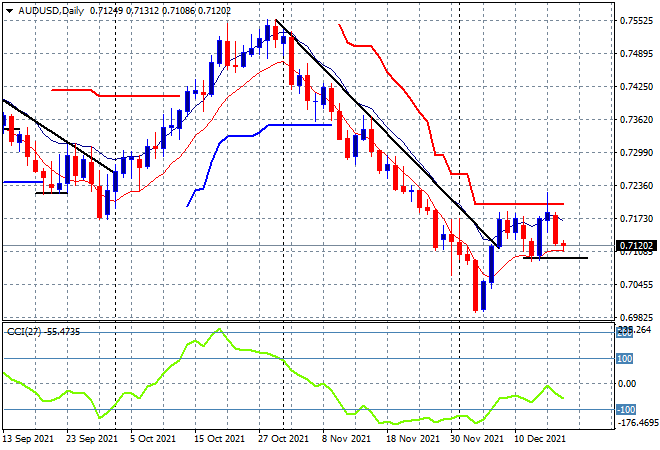
Medium term pressure remains here following last week’s BOE and ECB hawkish moves to tighten their easing policies combined with the accelerated pace at which markets expect the Fed to taper their asset buying program and indeed, put on as many as six rate raises next year, starting in March. Meanwhile the RBA is sitting on its hands.
That hasn’t stopped HSBC to consider that the Aussie maybe a relative outperformer compare to other currencies:
“We believe the USD should be in a stronger position in the coming months, there might be other currencies that can hold their own,” says Paul Mackel, Global Head of FX Research at HSBC.
HSBC tells investors they should look out for those currencies offering both positive carry and the added benefit that their central banks could normalise monetary policy faster and by a larger magnitude, with less already priced in to the front of the rate curve versus the terminal rate.
“When looking from this angle, the USD stands out… but so does the AUD,” says Mackel in HSBC’s 2022 currency outlook publication.
Backing for the Australian Dollar by one of the world’s largest corporate and investment banks comes at the end of what has been a year of underperformance for the antipodean currency.
The Australian Dollar is near the bottom of the G10 performance league, with gains only coming against the Yen and Swedish Krona. The Pound to Australian Dollar has gained 4.5% in value while the Aussie has lost a more substantial 7.30% against the U.S. Dollar.
“Based on market pricing there is room for further hawkish surprises which would be supportive for the AUD, relatively speaking,” says Mackel.
HSBC meanwhile sees little reason to favour the “rate hike laggards” which includes the Euro, Krona, Franc and Yen.
While supportive yields paid on Australian financial products – courtesy of this RBA policy shift – will be a key source of support for the currency in 2022, other factors will offer support too.
HSBC says the marked deceleration in global activity that has hampered the currency in the second half of 2021 should be less of an issue in 2022 as growth stabilises.
They also see China’s economy stabilising in the first quarter of 2022 on the back of policy stimulus. (NOTE: the 2022 forecasts came out ahead of the emergence of Omicron as a major consideration.)
HSBC upgrade their forecast profile for the Australian Dollar against the U.S. Dollar and set a point forecast of 0.74 for end-Q1 2022 that they maintain through to year-end.
Against Euro there maybe a case for relative outperformance for the Aussie, with the EURAUD cross showing an inability to maintain itself above the 1.60 level as yearly support at the 1.53 remains an anchor:
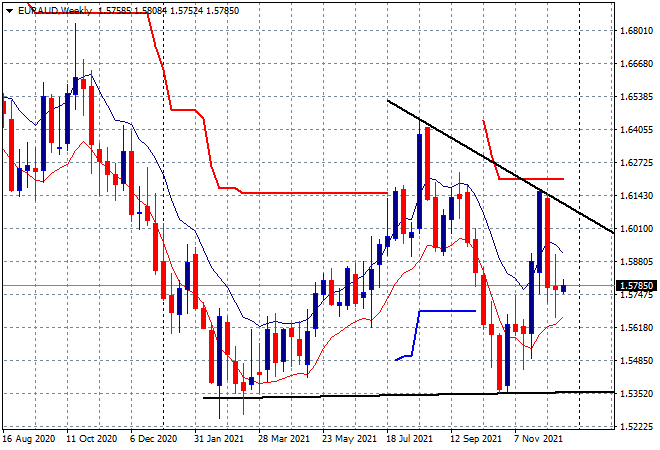
But against Pound Sterling, with the recent rate rise and Brexit concerns pressure is building on this cross to get back to the 2021 highs at the 1.91 level:
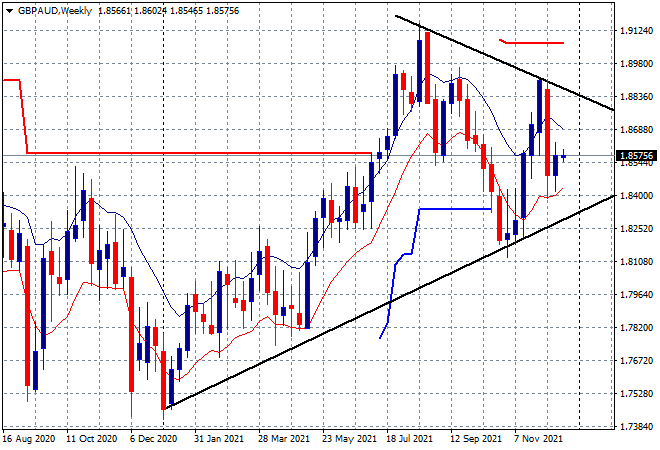
As for Yen, its a wild ride again, with a wide ranging trend channel since the start of the year as the buying in Yen safe havens has seen the Aussie weaken faster in the last few weeks, alongside equities:
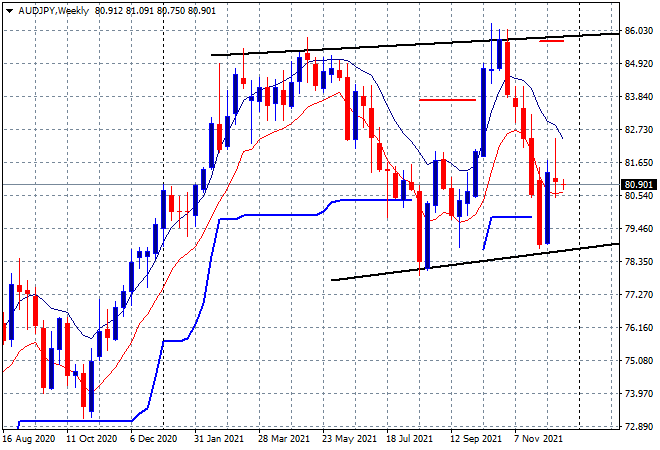
The next year could be another wild ride for the Australian dollar and finding safety in other crosses may not be as easy as HSBC suggests.